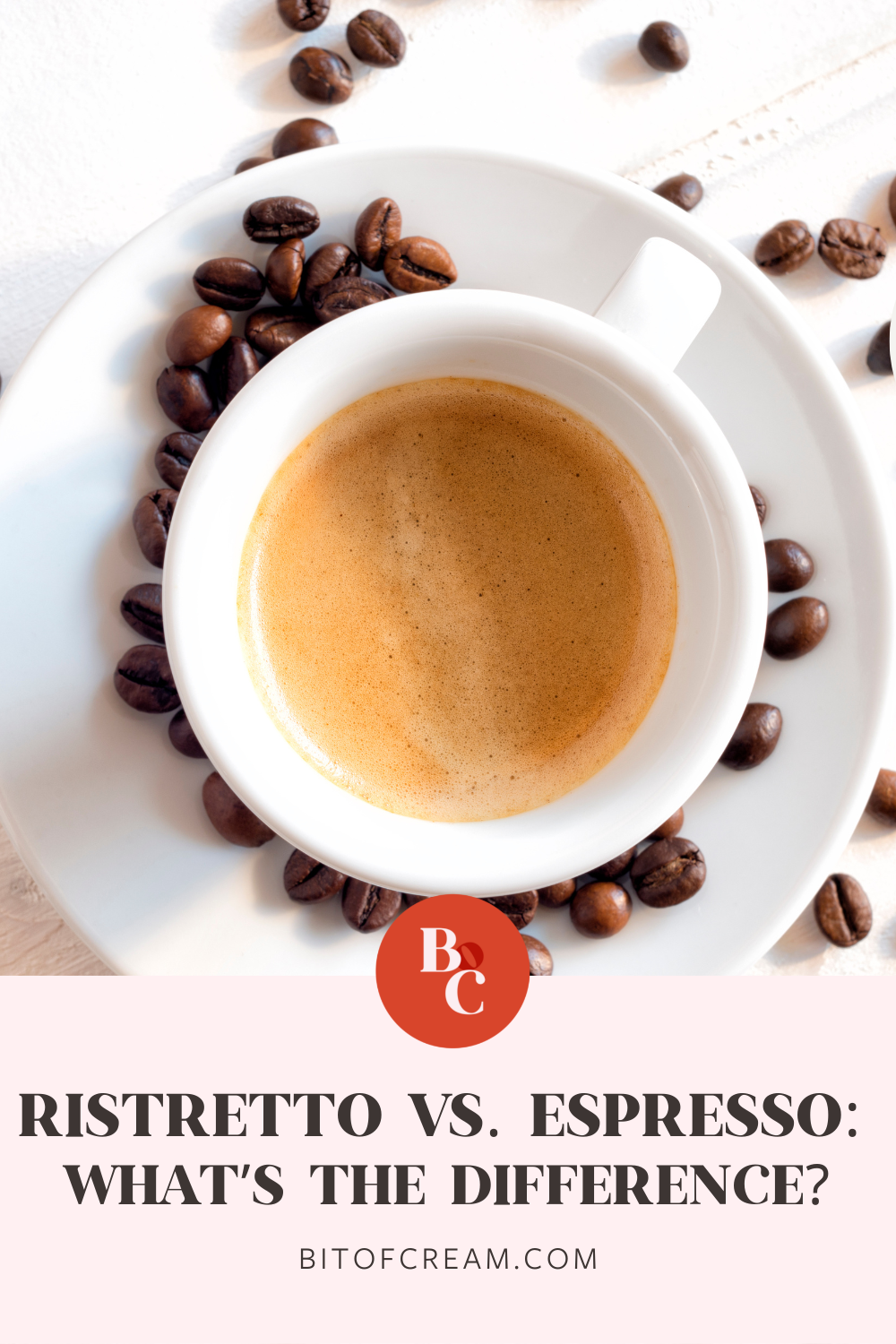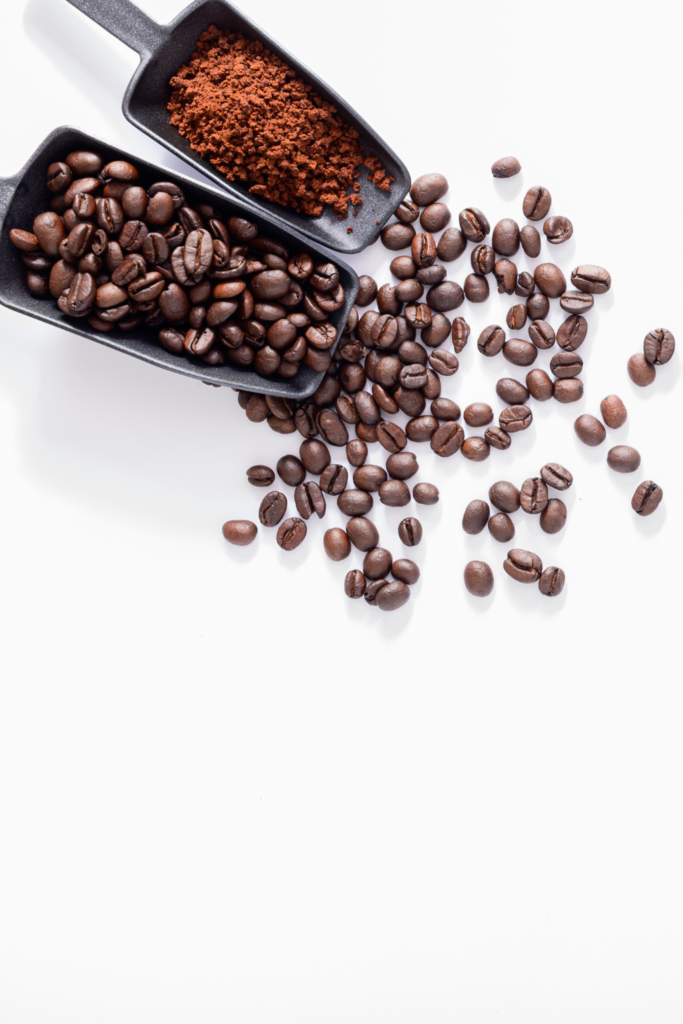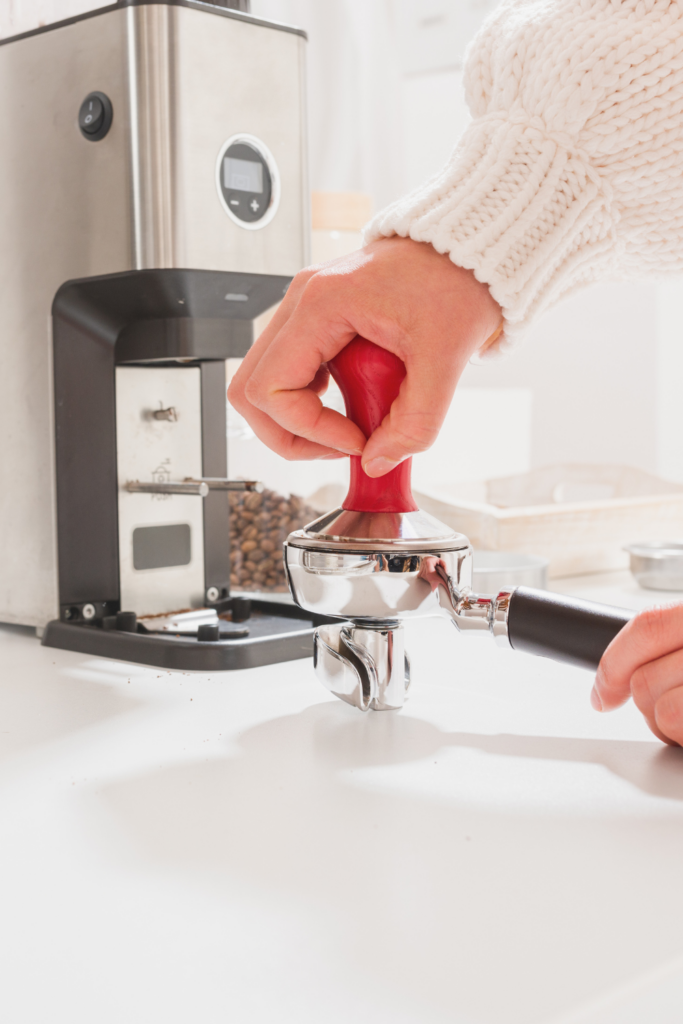Espresso is the basis of most modern coffee. It’s not the only brewing method, of course, but it is a big reason for the coffee renaissance we live in.
Compared with other extraction methods, espresso machines offer incredible precision over how a cup is made. More control means more ways to experiment. And more drink options!
Ristretto is one of the most important drinks derived from standard espresso. If you actually want to taste the coffee beans’ flavor, ristretto is a great way to do it.
This article will cover the basic formula for espresso, how it’s adjusted for ristretto, and a few of the main differences between Ristretto vs. Espresso!

What is an Espresso?
Espresso is a potent, flavorful, and full-bodied coffee drink. It’s usually prepared to order and served in small demitasse cups as a “shot.”
The brewing process is what makes espresso unique. A special machine is required to pull it off.
To “pull” a shot, the espresso machine pushes near-boiling water through a puck of compressed coffee beans. The force of water in an espresso machine is 9-10 bars, which is ten times more powerful than other brewing methods.
Several components of the brewing process can be adjusted to alter the resulting cup. The dose ratio, duration of the pull, and the volume of water are a few variables we’ll cover here.
The dose ratio for a standard espresso shot is 1:2. Which means 7 grams of ground coffee yield a 14-gram drink. About 1 fluid ounce in volume.
The duration of an espresso pull is 25-30 seconds. Compared with other brewing methods, this is quite fast. Speed is one reason that espresso is so popular.
A shot of espresso is bold, intense, and bitter. The flavor is much deeper than a regular cup of black coffee.

When pulled correctly, tiny C02 bubbles form an emulsion with oil extracted from the coffee beans. This contributes to the full body of the drink and adds a short layer of golden crema atop the cup – a signature of espresso.
While espresso is often enjoyed by itself, you’ll also find it as the cornerstone for every manner of coffee drink around the world.
What is a Ristretto?
A ristretto is a form of espresso prepared using a shorter extraction time. The name “ristretto” actually means “restricted” in Italian because the pull duration is shortened.
Whereas a standard espresso takes a 25-30 second pull, ristretto brewing is compressed to only 15-20 seconds.
Halving the time equates to a half-volume drink. The brew ratio for ristretto is closer to 1:1. Using 7 grams of coffee will create a 7-gram drink – about ½ fluid ounces in volume.
To taste ristretto is a more intense experience than Espresso because the cup is more concentrated. But, not every quality of the standard espresso is so pronounced in ristretto.
Why? Coffee extraction doesn’t happen all at once.
When water makes contact with ground coffee, the first flavors extracted are salty. Then sour, sweet, and bitter. And so forth.
You get a higher concentration of “front end” flavors with ristretto. And less bitterness.
A ristretto pull will have a rich, sweet taste with a lot of crema. It’s darker and has a fuller body texture than standard espresso. It’s often used as the coffee base in milk-and-coffee drinks because the intensity will cut through the milk flavor in the cup.
Differences Between Ristretto vs Espresso
Taste
Since a ristretto halves the extraction time of a standard espresso, you should expect the flavor to be fuller and more intense. Because the extraction process is restricted, ristretto usually has a sweeter flavor profile.
Standard espresso tastes strong, bold, and acidic. It can also be somewhat bitter. If you’re hoping to cut bitterness from your cup, restricting extraction time is a great way.
Appearance
A ristretto pull is noticeably shorter than a comparable espresso shot, about half the volume. A single ristretto shot is about ½ ounce, whereas espresso is a full ounce.
Ristretto has more dissolved coffee solids (by volume) than standard espresso, so it takes on a darker color – nearly black. Traditional espresso has a more layered look, with darker tones at the bottom of the cup and honey brown by the top.
Caffeine
A standard espresso has slightly more caffeine than a Ristretto since double the water needs to flow through the coffee grounds. More water means more extraction and, thus, more caffeine.
If you compare the drinks ounce-for-ounce, the ristretto would have more caffeine. But, since the two drinks’ standard sizes are ½ vs. 1 ounce, the espresso has more caffeine in one serving.
To be fair, the extra caffeine isn’t enough for you to really feel a difference – maybe 10 mg.
Quantity
Since the ratios between a ristretto vs espresso are different, the coffee’s resulting size also differs. A Ristretto, with a 1:1 coffee-to-water ratio, is about half the size of a single espresso.
A single shot of Espresso is 1 ounce, while a Ristretto should be about ½ ounce.
How To Make Espresso
1: Grind
To achieve peak flavor, grind your espresso beans only moments before brewing. This is true for all types of coffee prep – the fresher, the better.

You want to pay close attention to the texture of your grind since a finer grind will yield drastically different results than a coarser grind. Ideally, you’re looking to achieve a grind resembling granulated sugar.
2: Dose
Your “dose” is coffee-lingo for the amount of coffee grounds you’ll use to fill the portafilter and brew your espresso.
For a standard single shot of espresso, you’ll use 7g of finely ground beans, resulting in 30ml or 1 oz of brewed espresso.
Weigh out the necessary grounds and pour them into the portafilter.
3: Level
Next, you’re going to level the grounds in the portafilter. This ensures the water disperses evenly throughout the grounds and will filter through them all at the same rate.
Suppose you have a mound of coffee in the center and only a thin layer around the outside. In that case, the water will move through the thinner portions much faster than the center, resulting in unevenly brewed espresso.
To avoid this, gently tap the portafilter with the palm of your hand a few times until the surface looks even.
4: Tamp
Tamping the grounds is the second part of leveling. You’re tamping for the same reason; to ensure even brewing across all the grounds.
This step requires practice, and the more you do it, the more natural it will become, and your espresso brewing will only get better and better.
Place your portafilter on a stable and level surface and grip the tamper like a doorknob. Then, press the tamper into the portafilter with your elbow pointing toward the ceiling while applying even pressure.
Your goal is a smooth, flat layer of coffee grounds so that the water filters through at the same rate.
5: Brew
Finally, you’re ready to pull your shot!
Place your portafilter in your espresso machine. Then, place your cup under the nozzle.
You will pull the shot for 25-30 seconds until the full 30ml of water has run through the beans and the perfect ratio of crema crowns your espresso.
How to Make Ristretto
1: Grind
As with espresso, the ristretto grind should be fine – like granulated sugar.
Achieving a consistent grind size is an integral part of creating proper extraction. Some coffee grinders are better at this than others, and burr grinders are always better than a blade grinder.
Check your coffee grinder’s manual to understand which setting best suits a fine espresso grind. For best results, grind your coffee immediately before brewing.
2: Dose
Picking your “dose” means choosing the weight of the coffee grounds used in the portafilter to brew your drink. It’s often given as a ratio, like 1:1 for ristretto.
This ratio refers to the relationship between the weight of the ground coffee and the weight of the drink that comes out at the end.
For a standard Ristretto, use 7 grams of ground coffee to prepare a ½-ounce drink. Scale up this ratio to make a double.
3: Level
Gently tap the side of your portafilter, rotating as you do so that the ground coffee settles evenly across the basket. This step is vital because it sets up proper tamping.
The underlying principle is that we need the ground coffee to rest with even distribution and density before extraction begins (the “pull”).
4: Tamp
Rest the leading corner of the portafilter on a stable, level surface. Grip the tamper like a doorknob. Then press firmly and evenly to compress the coffee grinds into the portafilter basket.

The high-pressure water of the espresso machine will follow the path of least resistance during extraction. If the coffee puck is less compressed on one side, that is where the water will flow. It will mess with the flavor of the cup.
Practice makes perfect, so don’t fret if your tamp isn’t ideal from day 1.
5: Brew
Lock your portafilter into the espresso machine. Place a cup under the spout, begin the pull, and start your extraction timer.
The entire extraction should last 15-20 seconds.
Weigh your cup afterward, and see how you did. The ristretto should have equivalent weight to the ground coffee you added to start.
Ristretto vs. Espresso – FAQ
Ristretto is a variation on standard espresso, where the extraction time is cut in half. This equates to a smaller volume of coffee drink, with more flavor intensity and a fuller body.
Ristretto is actually less bitter than espresso. During coffee extraction, sweet flavors dissolve more quickly than bitterness. Since extraction time is restricted with ristretto, compared with standard espresso, the cup tends to be a bit sweeter.
Ristretto is a more concentrated form of espresso. You have a similar amount of dissolved solids present in half the volume of water. The flavor of a ristretto is more intense. While a ristretto does have more caffeine by volume, standard espresso has slightly more caffeine overall.
Looking for more coffee comparisons? Head here!
